blog»Content Marketing»Why Do Customers Buy? The Psychology Behind E-Commerce Sales
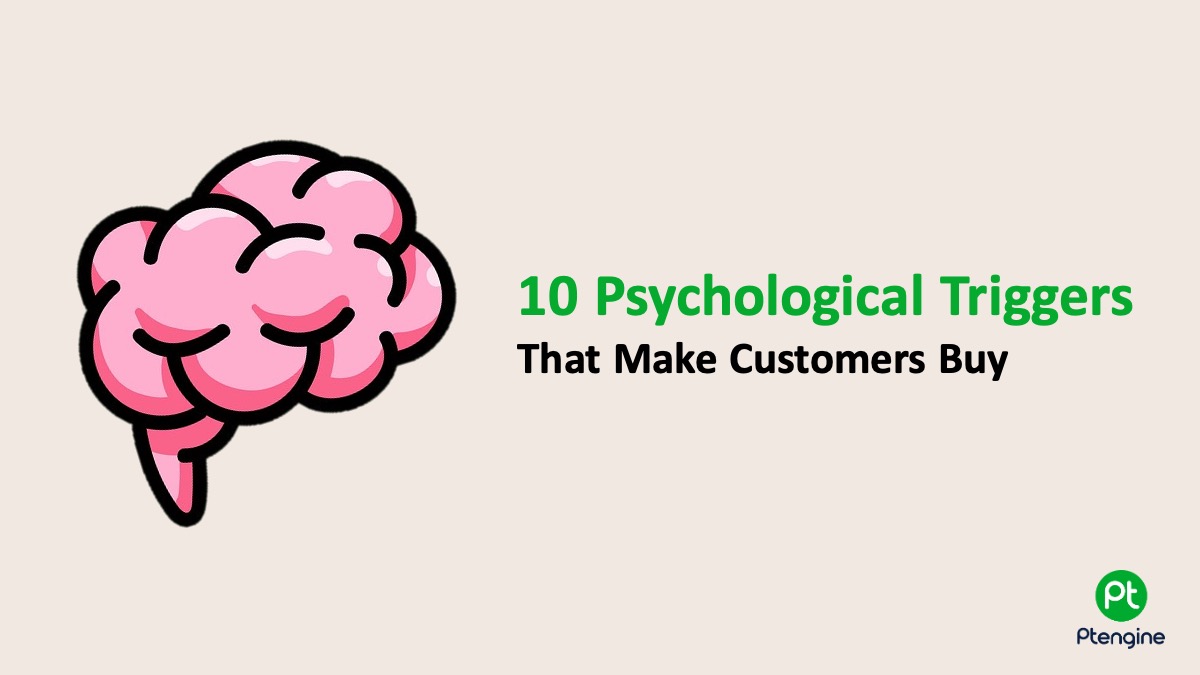
Why Do Customers Buy? The Psychology Behind E-Commerce Sales
2025/02/18
You can read this article in about 18 minutes
Introduction
Why do customers buy from one store but leave another without making a purchase? The answer lies in psychology in e-commerce. Every decision a shopper makes—whether they click “Buy Now” or abandon their cart—is influenced by emotions, habits, and mental shortcuts.
Successful e-commerce brands don’t just sell products. They use psychological triggers to guide buying decisions. For example, FOMO (fear of missing out) creates urgency, while social proof builds trust. These tactics make shoppers feel more confident, leading to higher conversions.
The good news? You don’t need a psychology degree to apply these strategies. In this article, we’ll break down 10 proven psychological triggers that top e-commerce brands use. You’ll learn how to integrate them into your own store and turn more visitors into buyers.
1. The Power of Scarcity & Urgency
People want what they might lose. When something is in limited supply or available for a short time, it suddenly feels more valuable. This is why countdown timers, “only a few left” messages, and flash sales work so well.
Take Booking.com, for example. When browsing hotels, you often see alerts like “Only 2 rooms left at this price!” This creates urgency. Shoppers don’t want to miss out, so they act fast.

How to apply this in e-commerce:
- Use countdown timers for limited-time sales or expiring discounts.
- Show stock levels (e.g., “Only 3 left in stock!”) to encourage quick decisions.
- Highlight popular items (e.g., “Selling fast!” or “Back in stock soon”).
- Offer exclusive, time-sensitive deals for email subscribers or loyal customers.
By adding urgency, you encourage shoppers to act now instead of waiting. This small tweak can lead to faster conversions and fewer abandoned carts.
2. Fear of Missing Out (FOMO)
Nobody wants to miss a great deal or be left out of something valuable. Fear of missing out (FOMO) is a powerful psychological trigger that makes people act quickly before an opportunity disappears.
Amazon uses FOMO in its Lightning Deals and Prime Day sales. Customers see a limited-time offer with a ticking countdown, which pushes them to buy before the deal vanishes. Seeing that others are also buying reinforces the urgency.
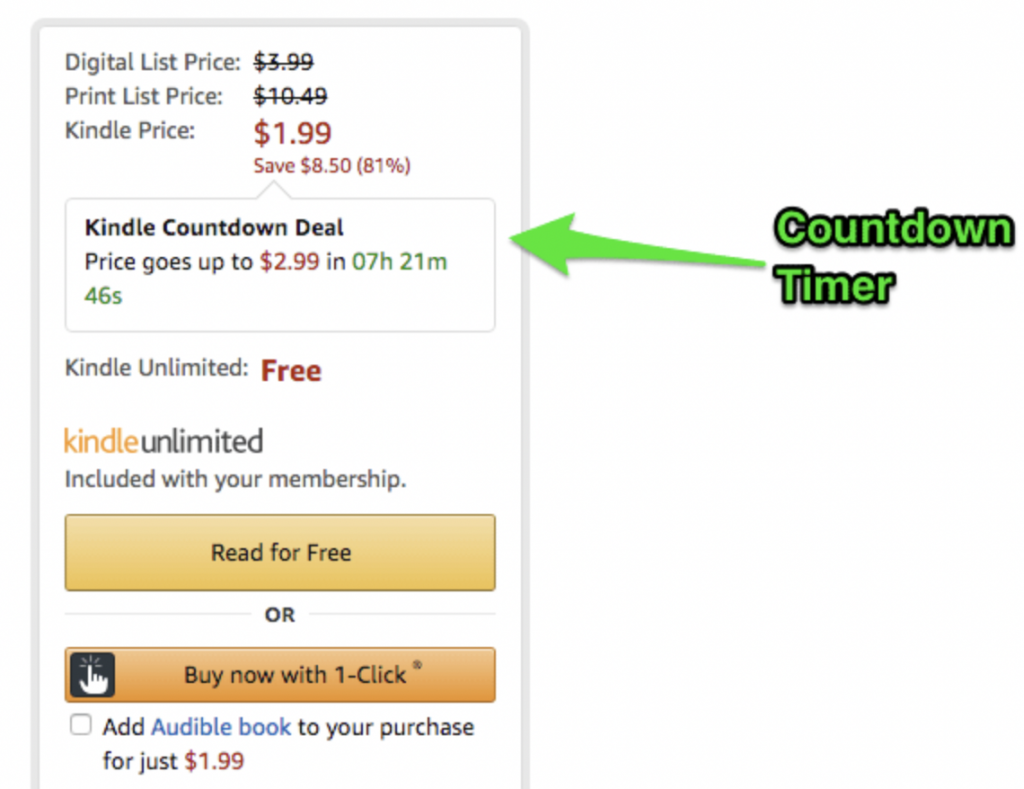
How to apply this in e-commerce:
- Show how many people are viewing or buying a product (e.g., “1,200 people bought this today!”).
- Use social proof pop-ups (e.g., “Emma from London just purchased this!”).
- Create limited-time bundles or discounts to drive immediate action.
- Promote exclusive VIP deals so customers feel they are getting something special.
FOMO makes customers think fast and act faster. By integrating this into your e-commerce store, you can increase urgency and drive more conversions.
3. Social Proof & the Bandwagon Effect
People trust what others do. If a product is popular, customers feel safer buying it. This is called the bandwagon effect—when people follow the crowd because they believe others must know something they don’t.
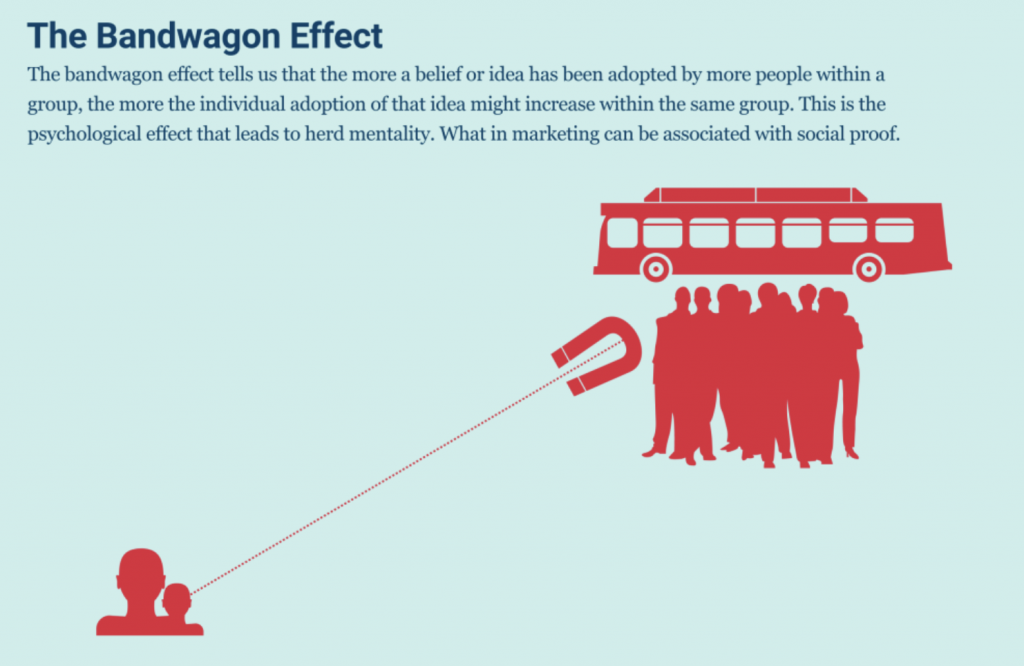
Glossier, a beauty brand built on user-generated content, uses social proof to grow its sales. Instead of relying on big ad campaigns, they feature real customer reviews, testimonials, and photos on product pages and social media. This makes shoppers feel confident about buying.
How to apply this in e-commerce:
- Display customer reviews and ratings prominently on product pages.
- Highlight bestsellers with tags like “Most Popular” or “Trending Now.”
- Use real-time purchase notifications (e.g., “John from New York just bought this!”).
- Encourage user-generated content by featuring customer photos and testimonials.
When customers see other people buying, loving, and recommending your products, they feel reassured. This builds trust and leads to more sales.
4. The Power of Reciprocity
When someone gives you something, you feel the need to give back. This is the reciprocity principle—one of the most effective ways to build customer loyalty and increase conversions.
Sephora uses this strategy by offering free samples with every purchase. Customers appreciate the extra value, making them more likely to buy again. The small gift creates goodwill, which leads to repeat business.

How to apply this in e-commerce:
- Offer a freebie with purchases, such as a sample, discount, or exclusive content.
- Give first before asking (e.g., free e-books, trial products, or loyalty points).
- Personalize thank-you emails with special offers for repeat customers.
- Surprise customers with unexpected bonuses to build long-term loyalty.
Giving before asking builds trust. Customers feel valued, which makes them more likely to return and buy again.
5. The Authority Bias
People trust experts and well-known brands. When a company is seen as an authority, customers feel more confident making a purchase. This is why endorsements, certifications, and expert reviews boost sales.

Apple uses this strategy perfectly. Their product launches include technical deep dives, industry awards, and expert reviews, making customers feel like they are buying the best technology available.
How to apply this in e-commerce:
- Highlight expert reviews from trusted sources on your product pages.
- Showcase awards and certifications to prove your brand’s credibility.
- Feature influencer endorsements from industry leaders or popular creators.
- Use clear data and facts to reinforce why your product is the best choice.
Customers want to trust the brands they buy from. Positioning your business as an authority makes them feel secure in their decision, leading to more conversions.
6. Commitment & Consistency
Once people commit to something small, they are more likely to follow through with a bigger action. This is known as the commitment and consistency principle—when customers take a small step, they subconsciously want to stay consistent with their previous actions.
Duolingo applies this perfectly. Their streak system keeps users engaged with daily reminders. Once someone starts learning a language, they don’t want to break their streak. This habit-forming tactic increases retention and, eventually, upsells users to Duolingo Plus.
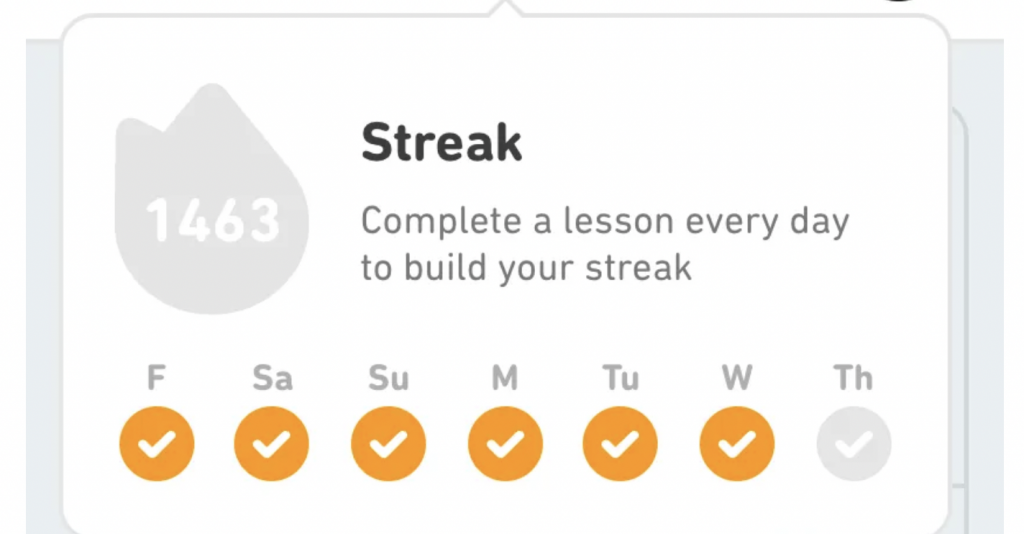
How to apply this in e-commerce:
- Encourage small commitments, like adding a product to a wishlist or signing up for a newsletter.
- Offer free trials to get users engaged before upselling.
- Use progress tracking (e.g., “You’re 75% to your next reward!”) to keep customers engaged.
- Send cart reminders (e.g., “You’re one step away from completing your order!”) to push conversions.
When customers take small steps, they are more likely to complete bigger actions—like making a purchase.
7. Loss Aversion
People hate losing more than they enjoy winning. This is the loss aversion principle, which explains why customers act fast when they fear missing out on something valuable.
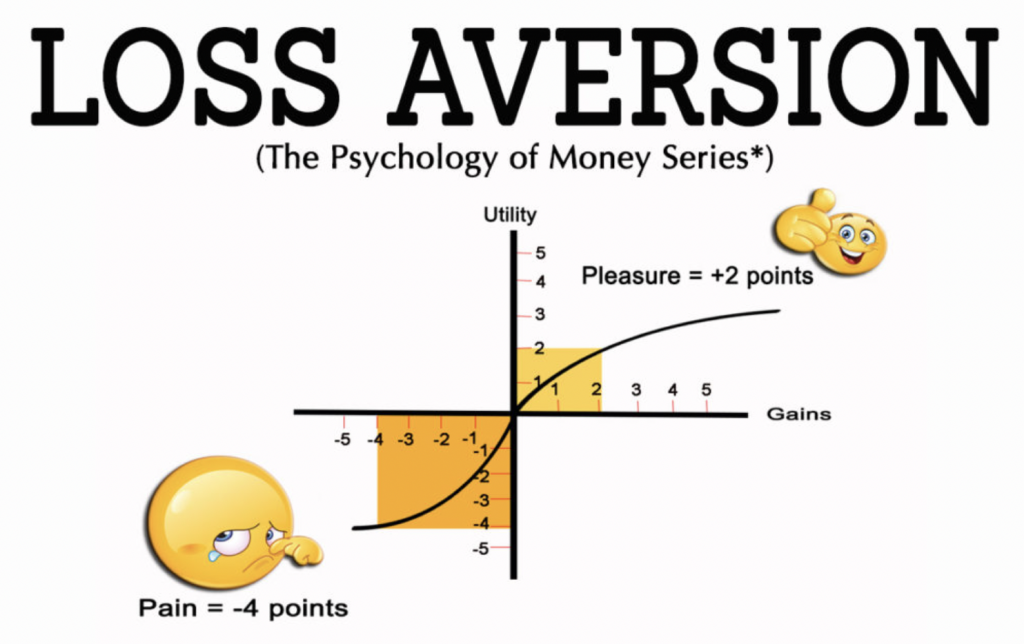
Netflix uses this brilliantly. When users consider canceling, Netflix reminds them what they’ll lose—personalized recommendations, downloads, and exclusive content. This makes people rethink their decision and stay subscribed.
How to apply this in e-commerce:
- Show expiring deals (e.g., “Your 20% discount disappears in 3 hours!”).
- Use cart abandonment emails that highlight what the customer is about to lose.
- Create VIP memberships that customers must stay active in to keep benefits.
- Show out-of-stock alerts (e.g., “Only a few left—don’t miss out!”).
When customers feel they might lose something, they take action faster. This makes loss aversion a powerful tool for conversion rate optimization.
8. Personalization & the Endowment Effect
People value things more when they feel a personal connection to them. This is known as the endowment effect—when something feels tailored to an individual, they are more likely to want to own it.
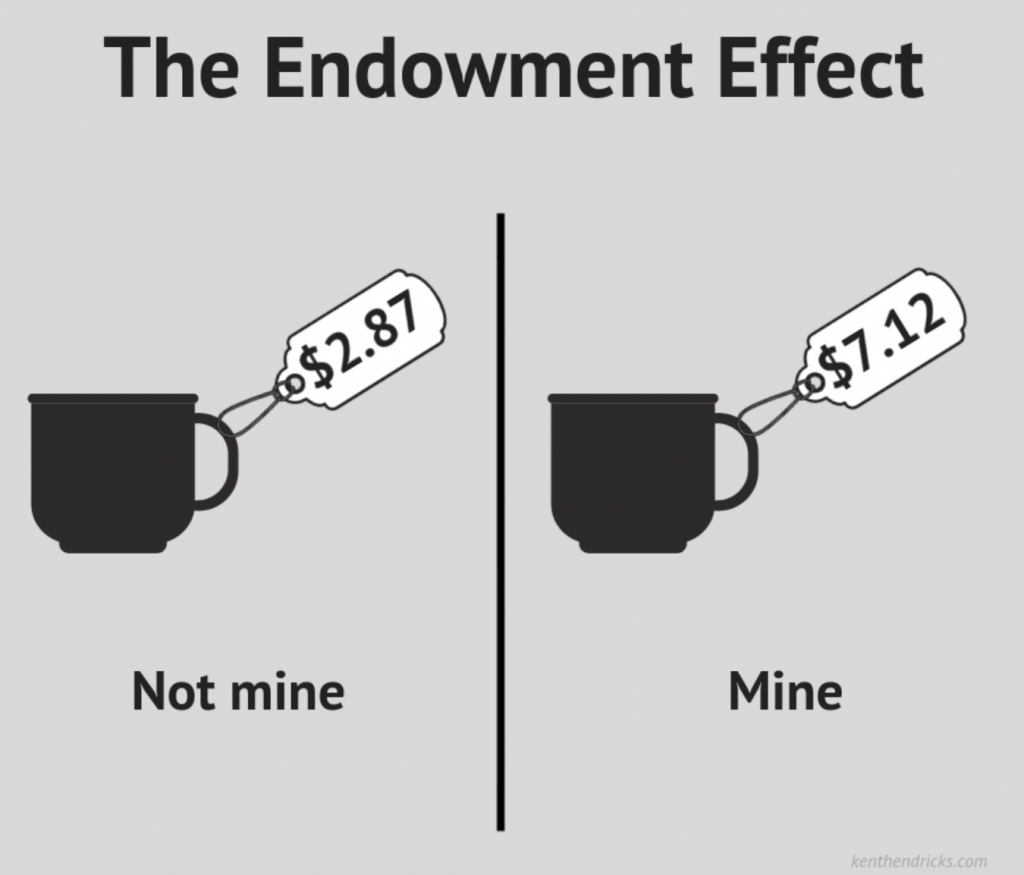
Nike’s “By You” customization feature is a perfect example. It allows customers to design their own sneakers, making them feel personally attached to the product before they even buy it. This increases both engagement and conversions.
How to apply this in e-commerce:
- Use AI-driven recommendations to show products based on browsing history.
- Personalize email campaigns with the customer’s name and past purchase behavior.
- Offer customizable products (e.g., engraving, color choices, or build-your-own bundles).
- Show “Recently Viewed” or “Picked for You” sections to re-engage shoppers.
When customers feel like a product is meant for them, they are much more likely to buy it or pay more.
9. The Decoy Effect
People don’t evaluate prices in isolation—they compare them to other options. The decoy effect is a pricing strategy where adding a third, less attractive option nudges customers toward a preferred choice.

Spotify and Netflix use this brilliantly. They offer three pricing tiers, where the middle option looks like the best deal. The “decoy” option is often priced too close to the premium version, making the upgrade seem like a no-brainer.
How to apply this in e-commerce:
- Offer three pricing tiers, making the middle one seem like the best value.
- Highlight a “most popular” or “best value” option to guide customer choices.
- Use contrast pricing (e.g., showing the original price crossed out next to a discounted one).
- Bundle products to make the premium option look like a better deal.
By strategically presenting pricing and options, you influence buying decisions and increase conversions.
10. The Power of Anchoring
People rely on the first piece of information they see when making decisions. This is called the anchoring effect—when a higher price is shown first, everything after it feels like a bargain.

Apple uses this in its pricing strategy. When launching a new iPhone, they highlight the most expensive model first. This makes the lower-priced options seem more affordable by comparison, even if they are still premium-priced.
How to apply this in e-commerce:
- Display the highest-priced item first to make other options feel more affordable.
- Show the original price before the discount (e.g., “Was $199, now $129!”).
- Use price comparisons (e.g., “Save 40% compared to buying separately!”).
- Highlight premium bundles before showing standard options to increase perceived value.
Anchoring helps customers feel like they are getting a great deal, making them more likely to complete their purchase.
Conclusion: How to use psychology to increase e-commerce sales
Customers don’t just buy products—they make decisions based on emotions, habits, and mental shortcuts. By understanding psychology in e-commerce, you can guide those decisions and increase conversions.
Key takeaways:
- Use scarcity and FOMO to create urgency and drive quick action.
- Leverage social proof to build trust and credibility.
- Apply reciprocity by offering freebies or exclusive perks.
- Use personalization to make customers feel valued and connected to products.
- Optimize pricing with anchoring and the decoy effect to influence purchasing choices.
Psychological triggers are powerful tools when used the right way. Start experimenting with these tactics, track the impact, and refine your strategy. The brands that truly understand their customers’ minds are the ones that turn browsers into buyers and buyers into loyal fans.
Which of these strategies will you try first?